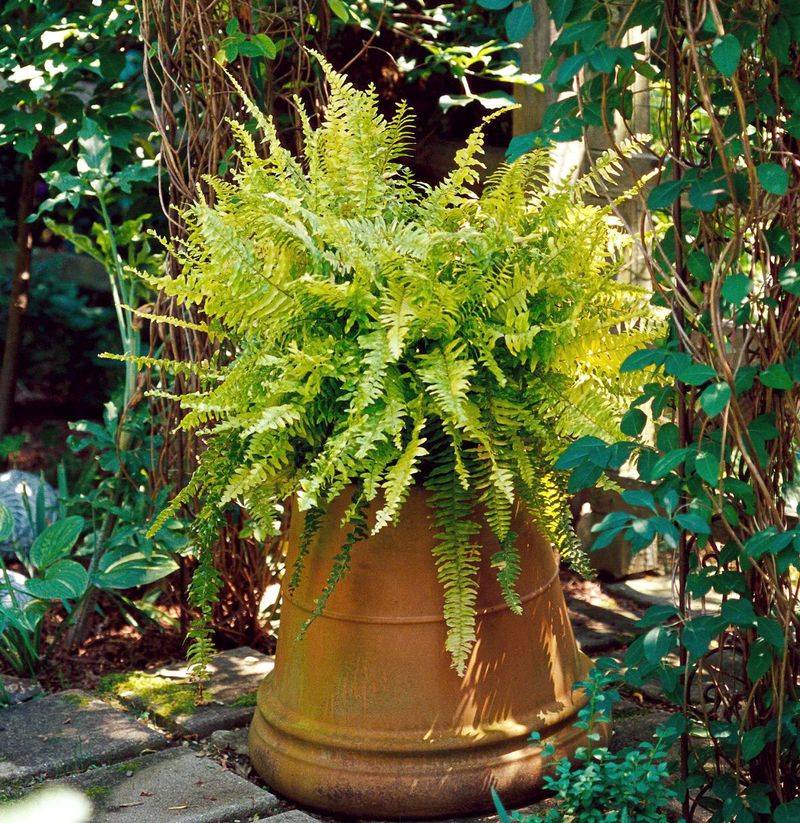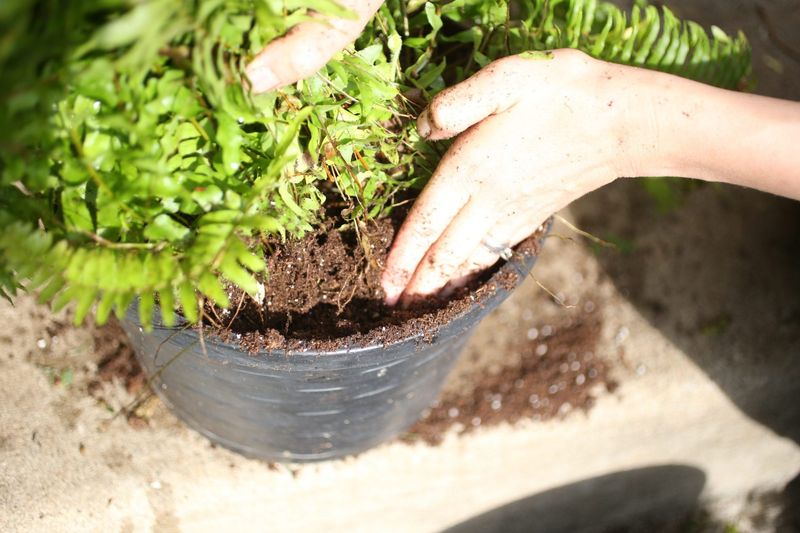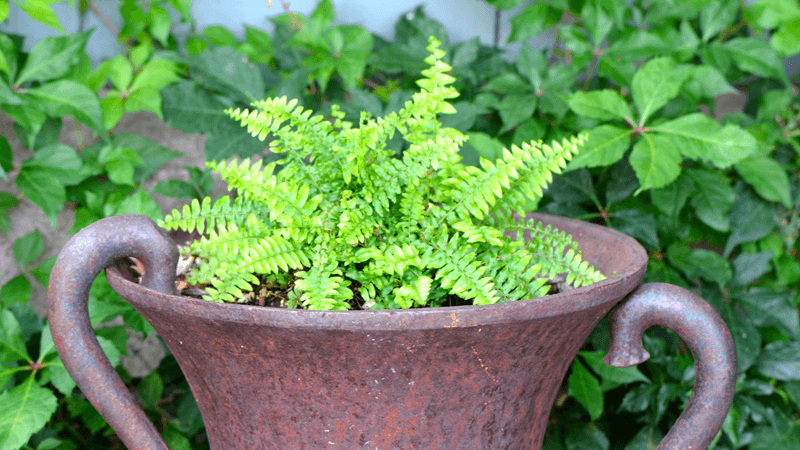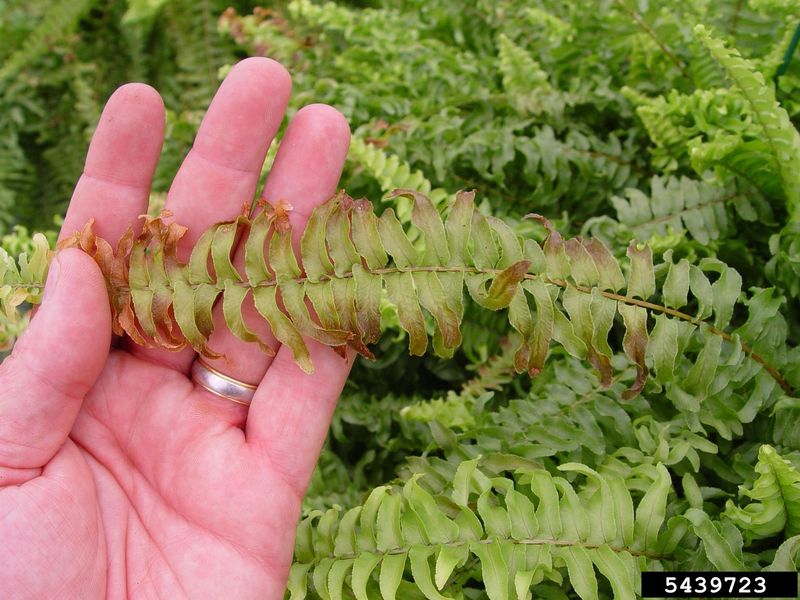Thinking about adding some tropical flair to your garden? Boston ferns might be just what you need. With their lush, feathery fronds, they bring instant charm and greenery to any outdoor space.
But to keep them thriving, you’ll need to give them the right care. Here are ten must-know tips to help your Boston ferns flourish outside.
1. Container vs. Ground Planting
If you’re deciding between planting Boston ferns in the ground or in containers, consider your climate and garden layout.
Containers offer more control over soil quality and drainage, making them ideal for beginners or areas with unpredictable weather. They also allow for easy relocation if sunlight or temperature conditions change.
Ground planting, however, can give the ferns more room to spread, creating a lush, natural look—just make sure your soil and drainage are up to par. Both methods have their advantages, so choose based on your garden’s specific needs.
2. Companion Planting Ideas
Boston ferns pair beautifully with other shade-loving plants. Hostas, impatiens, caladiums, and begonias are great companions that share similar care needs.
Planting them together not only boosts the garden’s visual appeal but also helps create a humid microclimate that ferns love.
This grouping can add color and texture to your shaded areas while simplifying your garden maintenance routine. Consider the growth habits of each plant to ensure they complement each other well.
3. Soil Requirements
The right soil mix is crucial for healthy Boston ferns. Opt for a well-draining soil rich in organic matter. Incorporate materials like peat moss or compost to retain moisture while ensuring good drainage.
Overly compacted soil can lead to root rot, so avoid heavy clay soils. Instead, use a mix that includes perlite or sand to improve aeration. Regularly check the soil moisture, keeping it consistently damp but not waterlogged.
This balance will promote robust growth and prevent common problems associated with poor soil conditions.
4. Mulching for Moisture Retention
Mulching around your Boston ferns is a smart way to keep the soil moist and regulate temperature.
Use organic mulch like shredded bark, leaf mold, or pine needles for best results. A layer of mulch helps reduce watering frequency and protects the roots from temperature extremes.
Just be sure not to pile mulch directly against the base of the plant, as this can lead to rot. Regularly check your mulch layer to maintain its effectiveness.
5. Watering Needs
Watering Boston ferns correctly is essential for their outdoor success. They require consistent moisture but should not be overwatered. Use a watering can or hose with a gentle spray to keep the soil damp.
It’s important to water them more frequently during hot, dry spells to prevent the soil from drying out completely. However, reduce watering in cooler months to prevent waterlogging.
Monitoring the soil’s moisture level will help you adjust your watering schedule, ensuring the ferns remain healthy and vibrant throughout the year.
6. Ideal Climate and Location
Boston ferns prefer a humid environment, making them ideal for regions with mild temperatures. They thrive in areas with indirect sunlight, such as shaded patios or under tree canopies. Avoid placing them in direct sunlight, as this can scorch their delicate fronds.
To ensure they receive adequate humidity, consider grouping them with other plants or using a humidity tray.
Furthermore, keep them away from strong winds, which can dry them out. Combining these elements mimics their natural habitat, allowing the ferns to grow lush and vibrant.
7. Fertilizing Tips
Fertilizing Boston ferns can enhance their growth and vibrancy. Use a balanced, water-soluble fertilizer every 4-6 weeks during the growing season. Dilute the fertilizer to half strength to avoid burning the delicate roots.
Avoid fertilizing during the winter months when the plant’s growth naturally slows down. This schedule mimics their natural growth cycle and prevents over-fertilization.
Always apply the fertilizer to moist soil to reduce the risk of damaging the plant. Regular feeding will keep your ferns lush and thriving.
8. Pruning Practices
Pruning helps keep Boston ferns healthy and aesthetically pleasing. Regularly remove dead or yellowing fronds to promote new growth and maintain a tidy appearance.
Pruning also aids in preventing disease by improving air circulation within the plant. Use clean, sharp scissors to avoid damaging the plant.
In addition to routine maintenance, consider a more thorough pruning in early spring to prepare the fern for the growing season. These practices contribute to a bushier, more vibrant plant.
9. Pest Management
Boston ferns can fall prey to pests like spider mites and mealybugs. Regular inspections of the fronds are crucial for early detection. At the first sign of pests, treat the plants with insecticidal soap or neem oil.
Encouraging natural predators, such as ladybugs, can also help control pest populations. Maintaining overall plant health is key to prevention.
Ensure proper air circulation around the ferns to deter infestations. By integrating these practices, you can manage pests effectively and maintain the beauty of your Boston ferns.
10. Winter Care
In cooler climates, special care is needed for Boston ferns during winter. If temperatures drop significantly, consider bringing the ferns indoors or into a sheltered area.
Alternatively, cover them with a protective material to shield them from frost. Ensure the covering allows for adequate airflow to prevent mold.
Reduce watering during this period, as the plant’s growth slows down. By adjusting your care routine, you can protect your ferns from harsh winter conditions and ensure their return in the spring.










